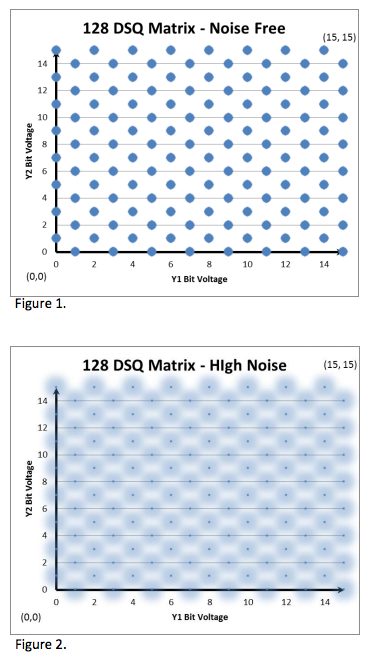High speed networks are susceptible to noise. True or false?
We all know the answer to this one from experience... True.
Check out this white paper from Hitachi to learn a bit more on why, and what you can choose to do about it.
 In order to transmit higher and higher data rates, more complex signal encoding schemes must be developed to more fully utilize the noise and bandwidth properties of Category cables. As data rates increase, continued optimization of clock rates and the number of voltage levels evolves.
In order to transmit higher and higher data rates, more complex signal encoding schemes must be developed to more fully utilize the noise and bandwidth properties of Category cables. As data rates increase, continued optimization of clock rates and the number of voltage levels evolves.
"For 100Mbps Ethernet, a 3 level encoding system is used, requiring the receiver to discern which of the 3 levels of voltage were transmitted for each and every bit. Category 5e and 6 cables and components can easily support 100Mbps Ethernet. Gigabit Ethernet (1000Mbps) increased the encoding levels to 5, making the distinction between the different voltage levels more challenging. This increase in encoding levels required slightly better performance out of the passive network components. Category 6 tested to 250 MHz and with improved crosstalk, takes an advantage over Category 5e.
10Gbps Ethernet (10,000Mbps) encoding required expanding the frequency range as well as adding more, smaller voltage changes in order to provide the bandwidth required. Each of the four pairs transmits 2.5Gbps with an encoding scheme using 16 voltage steps. Due to the much smaller voltage steps, the sensitivity to noise with the encoding system resulted in the addition of Alien Crosstalk requirements for Category 6A cables. Category 6A components are rated and tested up to 500MHz to ensure support of the 16 voltage steps."

Contact your local Accu-Tech representative to learn more.



.png?width=58&height=58&name=X_logo_2023_(white).png)
